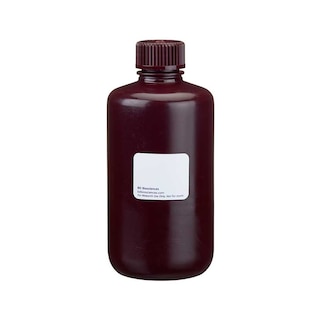-
Training
- Flow Cytometry Basic Training
-
Product-Based Training
- BD FACSDiscover™ S8 Cell Sorter Product Training
- Accuri C6 Plus Product-Based Training
- FACSAria Product Based Training
- FACSCanto Product-Based Training
- FACSLyric Product-Based Training
- FACSMelody Product-Based Training
- FACSymphony Product-Based Training
- HTS Product-Based Training
- LSRFortessa Product-Based Training
- Advanced Training
-
- BD FACSDiscover™ S8 Cell Sorter Product Training
- Accuri C6 Plus Product-Based Training
- FACSAria Product Based Training
- FACSCanto Product-Based Training
- FACSLyric Product-Based Training
- FACSMelody Product-Based Training
- FACSymphony Product-Based Training
- HTS Product-Based Training
- LSRFortessa Product-Based Training
- United States (English)
-
Change country/language
Old Browser
This page has been recently translated and is available in French now.
Looks like you're visiting us from {countryName}.
Would you like to stay on the current country site or be switched to your country?





Analysis of p53 (pS37) in human epidermoid carcinoma. The shaded histogram represents A-431 cells (ATCC CRL-1555) that were exposed to 2,400 joules of ultraviolet light (UV), allowed to recover in culture for 1.5 hours, then treated with 2 nM calyculin A plus 500 nM okadaic acid for 30 minutes at 37ºC, and finally detached using trypsin in the presence of calyculin A plus okadaic acid. The open histogram represents untreated A-431 cells. The cells were fixed (BD Cytofix™ buffer, Cat. No. 554655) for 10 minutes at 37°C, then permeabilized (BD Phosflow™ Perm Buffer III, Cat. No. 558050) on ice for 30 minutes, and then stained with Alexa Fluor® 647 Mouse anti-p53 (pS37). Flow cytometry was performed on a BD FACSArray™ bioanalyzer system. The specificity of mAb J159-641.79 was confirmed by western blot analysis. Lysates from control (left panel) and UV-calyculin A-okadaic acid-treated (right panel) A-431 cells were probed with purified antibody at concentrations of 0.5, 0.25, and 0.125 µg/ml (Lanes 1, 2, and 3, respectively). p53 (pS37) is identified as a band of 53 kDa in the treated cells.



BD™ Phosflow Alexa Fluor® 647 Mouse anti-p53 (pS37)

BD™ Phosflow Alexa Fluor® 647 Mouse anti-p53 (pS37)

Regulatory Status Legend
Any use of products other than the permitted use without the express written authorization of Becton, Dickinson and Company is strictly prohibited.
Preparation And Storage
Recommended Assay Procedures
Either BD Cytofix™ fixation buffer or BD Phosflow™ Fix Buffer I may be used for cell fixation.
Product Notices
- This reagent has been pre-diluted for use at the recommended Volume per Test. We typically use 1 × 10^6 cells in a 100-µl experimental sample (a test).
- Please refer to www.bdbiosciences.com/us/s/resources for technical protocols.
- The Alexa Fluor®, Pacific Blue™, and Cascade Blue® dye antibody conjugates in this product are sold under license from Molecular Probes, Inc. for research use only, excluding use in combination with microarrays, or as analyte specific reagents. The Alexa Fluor® dyes (except for Alexa Fluor® 430), Pacific Blue™ dye, and Cascade Blue® dye are covered by pending and issued patents.
- Alexa Fluor® is a registered trademark of Molecular Probes, Inc., Eugene, OR.
- Alexa Fluor® 647 fluorochrome emission is collected at the same instrument settings as for allophycocyanin (APC).
- For fluorochrome spectra and suitable instrument settings, please refer to our Multicolor Flow Cytometry web page at www.bdbiosciences.com/colors.
- Caution: Sodium azide yields highly toxic hydrazoic acid under acidic conditions. Dilute azide compounds in running water before discarding to avoid accumulation of potentially explosive deposits in plumbing.
- Source of all serum proteins is from USDA inspected abattoirs located in the United States.
Companion Products



The p53 protein is critical to regulation of normal cell growth and is a suppressor of tumor cell proliferation. Inactivation of p53 by a number of mechanisms, such as missense mutations or interaction with oncogenic viral or cellular proteins, can result in tumor progression. Mutations and/or allelic loss of the p53 gene are associated with a wide variety of human tumors. Known to have a role in transcriptional regulation, p53 suppresses various promoters containing TATA elements in an apparently sequence-independent fashion. p53 also binds to DNA in a sequence-specific manner via recognition of a 20-bp consensus-binding site. This interaction stimulates the expression of genes downstream of the p53 binding site. A number of genes that contain p53-binding sites have been identified, including MDM2, GADD45, and muscle creatine kinase, which primarily prevent cell proliferation. MDM2 mediates feedback inhibition of p53, which is prevented by phosphorylations of p53 amino-terminal serines and threonines. Upon exposure to DNA damage-inducing agents, ATR and DNA-PK (ataxia telangiectasia- and Rad3-related and DNA-dependent protein kinases, respectively) phosphorylate p53 at serine 37 (S37). This phosphorylation disrupts the binding of MDM2 to p53, allowing the cell's stress responses to proceed.
The J159-641.79 monoclonal antibody recognizes p53 phosphorylated at S37.
Development References (4)
-
Bode AM, Dong Z. Post-translational modification of p53 in tumorigenesis. Nat Rev Cancer. 2004; 4(10):793-805. (Biology). View Reference
-
Dohoney KM, Guillerm C, Whiteford C, et al. Phosphorylation of p53 at serine 37 is important for transcriptional activity and regulation in response to DNA damage. Oncogene. 2004; 23(1):49-57. (Biology). View Reference
-
Saito S, Yamaguchi H, Higashimoto Y, et al. Phosphorylation site interdependence of human p53 post-translational modifications in response to stress. J Biol Chem. 2003; 278(39):37536-37544. (Biology). View Reference
-
Yu J, Hwang PM, Rago C, Kinzler KW, Vogelstein B. Identification and classification of p53-regulated genes. Proc Natl Acad Sci U S A. 1999; 96(25):14517-14522. (Biology). View Reference
Please refer to Support Documents for Quality Certificates
Global - Refer to manufacturer's instructions for use and related User Manuals and Technical data sheets before using this products as described
Comparisons, where applicable, are made against older BD Technology, manual methods or are general performance claims. Comparisons are not made against non-BD technologies, unless otherwise noted.
For Research Use Only. Not for use in diagnostic or therapeutic procedures.
Report a Site Issue
This form is intended to help us improve our website experience. For other support, please visit our Contact Us page.